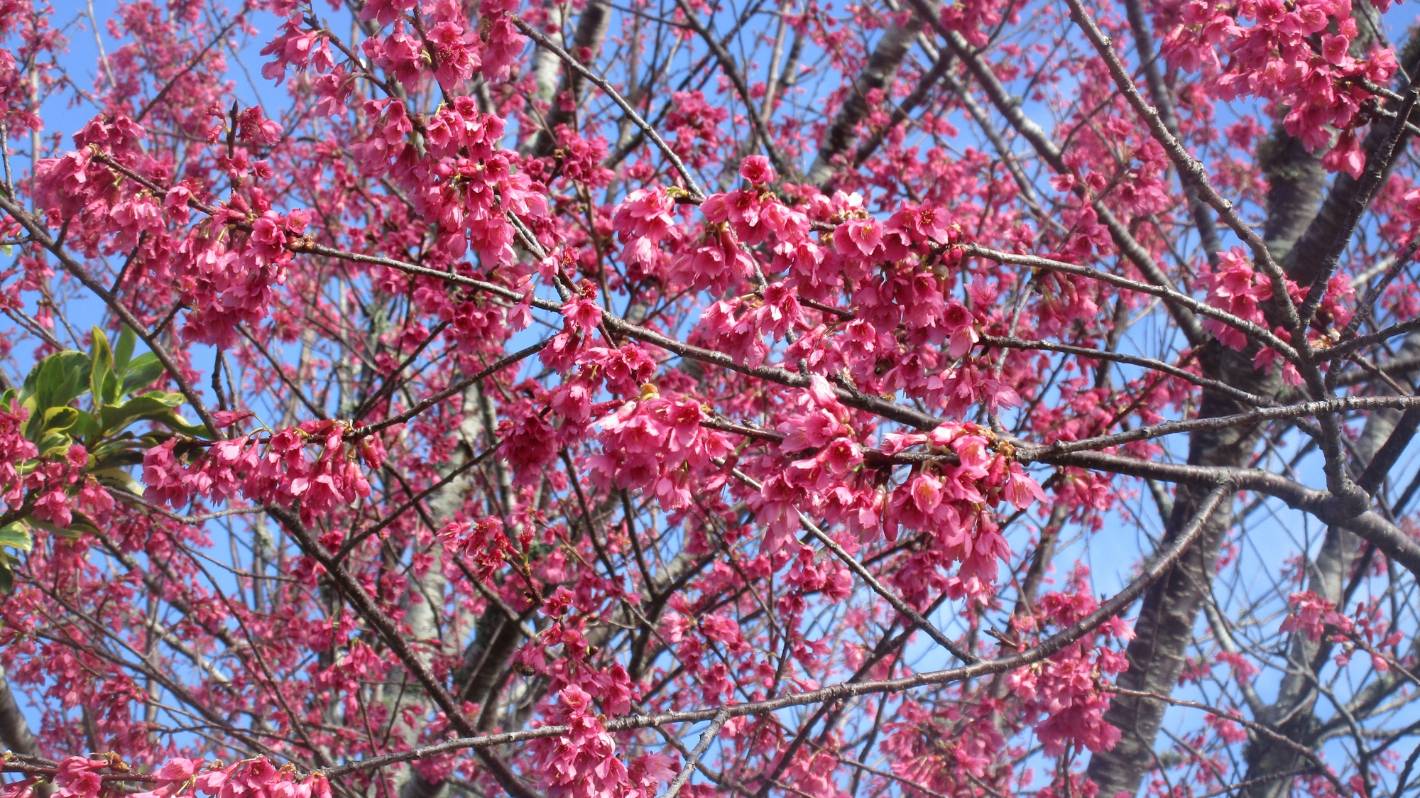It’s very pretty, bright pink and “everywhere” right now.
No, not the Barbie movie – it’s Taiwan cherry: an invasive weed that threatens to overtake native plants.
The deciduous tree is best identified by its bright pink or red bell-shaped flowers, which are on display from July to September – and especially bright in August.
It is spread by birds throughout the warmer parts of New Zealand, including Northland, Auckland, Bay of Plenty and Nelson-Tasman.
AgResearch senior scientist Dr Trevor James said Taiwan cherry’s shade tolerance mean it can grow everywhere, including anything but the shadiest part of the bush.
“It’s certainly on bush margins and everywhere where birds might rest,” he said.
SUPPLIED
Taiwan cherry (Prunus campanulata) is an invasive species, now flowering in New Zealand’s warmer regions. (File photo)
“Personally, I don’t like it because it spreads into areas that are vulnerable, but that’s not a universal view.”
Northland conservationist Brad Windust said the fact Taiwan cherry is sometimes admired by landowners makes it even more of a problem.
“I think a lot of people are reluctant to get rid of it because it provides nectar for the tūi and leaves for the wood pigeon … But it pushes out other native species; it gets really, really thick and invasive.”
The Taiwan cherry tree is also very beautiful when it flowers, Windust admitted.
Peter Williams/Supplied
Taiwan cherry’s seeds are spread by birds and it can be highly invasive, as this 2014 photo from the outskirts of Nelson shows.
“It is a beautiful-looking tree but we have lots of beautiful-looking trees, like the kōwhai – I would really encourage people to swap it for a kōwhai.”
In Ōpua state forest, where Windust’s group Bay Bush Action does pest control, Taiwan cherry is found in the heart of the forest, in wetlands and on the bush margin. It is the first plant to grow in slip material.
The tree’s spread is getting “worse and worse”, in part because the group’s removal of rats and stoats has meant there are more birds to spread its seed, he said.
The tree also has the potential to spread through natural ecosystems across Tāmaki Makaurau due to the bird dispersion, said David Stejskal, Auckland Council regional arborists and ecological manager.
Brad Windust from Bay Bush Action admits Taiwan cherry is pretty, but says it is no match for beautiful natives like kōwhai. (File photo)
“It invades native forest and is likely to displace native plants. Closely related species are highly invasive overseas, and known to reduce plant functional diversity in invaded forests.”
To help protect the environment, it is illegal to sell, propagate or distribute Taiwan cherry in regions where it is a problem.
Windust said now is the best time to identify Taiwan cherry trees, chop them down and replace them with a native, like a kōwhai tree.
James said the trees can be cut down and should be immediately stumped to prevent regrowth, either with glyphosate or a woody weedkiller.



